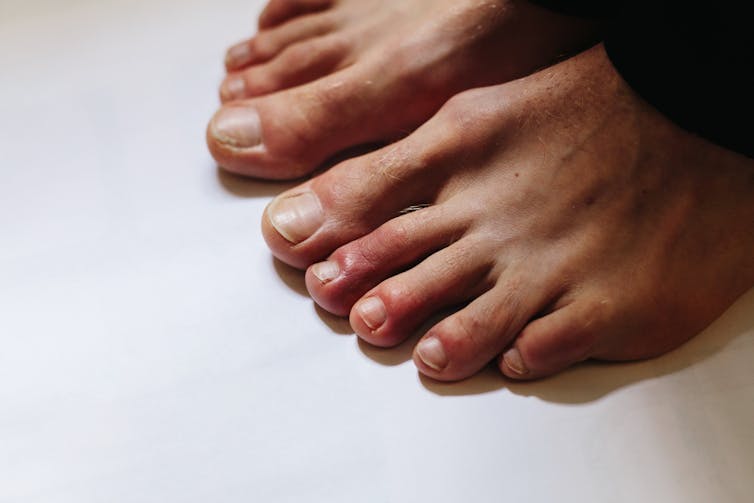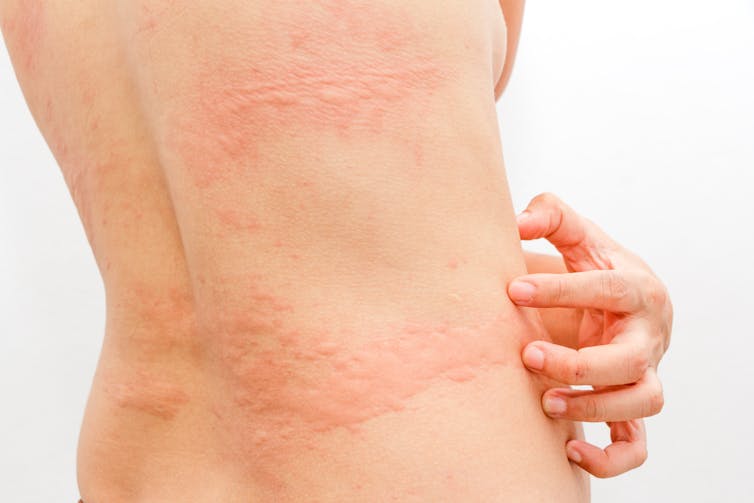- Effective next Wednesday, March 10, all businesses can open with 100% capacity.
- Statewide mask mandate ends next week; masks still encouraged to be worn
- State sets records for number of vaccines administered in a day
Texas Gov. Greg Abbott (R) says it's time to "open Texas 100%" and ended the statewide mask mandate, effective next Wednesday, citing downward trends in hospitalizations and the availability of medicines and vaccines to keep people from requiring hospitalization.
The governor delivered a statewide address Tuesday from Montelongo's restaurant in Lubbock where he said the state mandates were no longer needed in the battle against COVID-19 and that he was issuing a new executive order (GA-34) that rescinds most of his other pandemic-related orders.
The new executive order allows all businesses, of any type, to open to 100% capacity and, though the governor strongly encouraged people to continue wearing face coverings in public, he said people will no longer be required to do so.
The executive order also removes the ability of local authorities to impose a mask mandate. Abbott's order said: "Individuals are strongly encouraged to wear face coverings over the nose and mouth wherever it is not feasible to maintain six feet of social distancing from another person not in the same household, but no person may be required by any jurisdiction to wear or to mandate the wearing of a face covering."
Tarrant County Judge Glen Whitley, who had recently extended his mask mandate until May 25, rescinded that order based on the governor's action Tuesday saying it was confusing to people but that he'd wished Abbott had carried the mandate at least through Spring Break. Dallas County Judge Clay Jenkins, meanwhile, was upset by Abbott's order.
“Nothing the governor does anymore surprises me. It was disappointing. But again, we need to focus on what the doctors, the facts and the science tell us we need to do to stay safe. If we’ll do that as a community, then we can still reach herd immunity,“ said Jenkins.
The governor rationalized the move by saying hospitalizations of people infected with the virus are at the lowest they have been in the last four months and that the number of active COVID-19 cases are less than half of what they were a month ago and that they are also at their lowest point since November.
When Abbott put the restrictions in place last summer, the number of hospitalizations was half of what they are today and the total number of cases since March was fewer than 2,500. As of Monday, data from the Texas Department of State Health Services estimates there are currently 156,989 active cases of the virus in the state and that more than 5,600 people are hospitalized.
Still, the governor contends recent data trends indicate "far more Texans are recovering from COVID than contracting it" and that "state mandates are no longer needed."
"Removing state mandates does not end personal responsibility or the importance of caring for your family members and caring for your friends and caring for others in your community," Abbott said. "Personal vigilance to follow the safety standards is still needed to contain COVID, it's just that now state mandates are no longer needed. Texans should continue following medical advice on preventing COVID."
Abbott said if businesses want to impose their own capacity restrictions or implement other safety protocols, they have the right to do so and can operate their business as they want to at this time, however people and businesses don't need the state telling them how to operate.
Citing statistics from the Centers for Disease Control and Prevention, Abbott said more than 10 million Texans are believed to have recovered from COVID-19 and "have the proven ability to beat the disease."
To reassure local leaders and citizens concerned the removal of the mask mandate and reopening of all businesses may be coming too quickly, Abbott said the executive order allows for restrictions to return should hospitalizations of COVID-19 patients top 15% for more than seven consecutive days. In that case, Abbott said county judges in those areas would be permitted to use mitigation strategies to prevent the further spread of the disease. However, Abbott said those judges may not jail people for not following orders, they may not invoke any penalties for not wearing a mask and they must allow businesses to operate at least at 50% occupancy.
Abbott said the downward trend in cases and hospitalizations was due in part to the success the state has had in administering vaccines. The various vaccine hubs and clinics around the state were administering about 1 million doses per week, the governor said, and that on Tuesday the state set a single-day record of administering 216,000 doses. The governor said that so far more than 5.7 million doses have been administered in the state and that by next Wednesday that number will be nearly 7 million doses.
Also by next Wednesday, Abbott said more than half of all seniors in the state will have received a dose of the vaccine and by the end of the month all of the state's seniors will be able to receive the shot.
Abbott didn't say when, but he hinted that the groups of people who are currently eligible for the vaccine will expand soon beyond groups 1A and 1B. Abbott made no mention about teachers, whom many have hoped would be provided priority access to the vaccine.
The executive order issued Tuesday rescinds one of Abbott's most wide-ranging executive orders relating to the virus -- the one issued June 26, 2020 closing bars and limiting other businesses to 50% capacity.
When that order was issued just over eight months ago, the seven-day average of COVID-19 cases and the number of total Texans hospitalized with the virus was lower than it was through Sunday.
On June 26, Texas' seven-day average of new coronavirus cases was 5,091 and there were 5,523 COVID-19 hosptializations statewide.
On Sunday, the state's seven-day average was 5,816 -- the lowest it'd been since Oct. 20 and down from a peak of 19,528 on Jan. 16. There were 5,611 people hospitalized with the virus in Texas on Feb. 28.
The hospitalization rate in Trauma Service Area E, which includes most of North Texas, dropped below 15% Feb. 11 and has not exceeded the number since. The percentage dropping below that threshold for seven straight days allowed bars to reopen, increased capacity at some businesses to 75% from 50% and allowed the resumption of elective surgeries.
The percentage of COVID-19 patients to bed capacity is down to just 9%, and the ICU COVID-19 patients are 24% of total ICU capacity, down from 50% six weeks ago.
"We do not want to let our guard down. We must continue wearing masks, physical distancing, washing hands, and get vaccinations in as many arms as possible," CEO of Dallas-Fort Worth Hospital Council Stephen Love said Monday. "Spring breaks are coming and we need everyone to do their part to keep the COVID-19 virus spread as low as possible."
The major differences between March 2021 and June 2020, of course, are the availability of antibody therapeutic drugs to treat COVID-19 and the rollout of the COVID-19 vaccines.
According to data compiled by The New York Times from the Centers for Disease Control and Prevention, 6.2% of Texas residents had been fully vaccinated and 12.2% had received their first dose. The single-shot Johnson & Johnson COVID-19 vaccine started to ship nationwide on Monday and was being administered in North Texas on Tuesday.
https://www.nbcdfw.com/news/local/texas-news/abbott-to-make-statewide-announcement-tuesday-in-lubbock/2567387/

